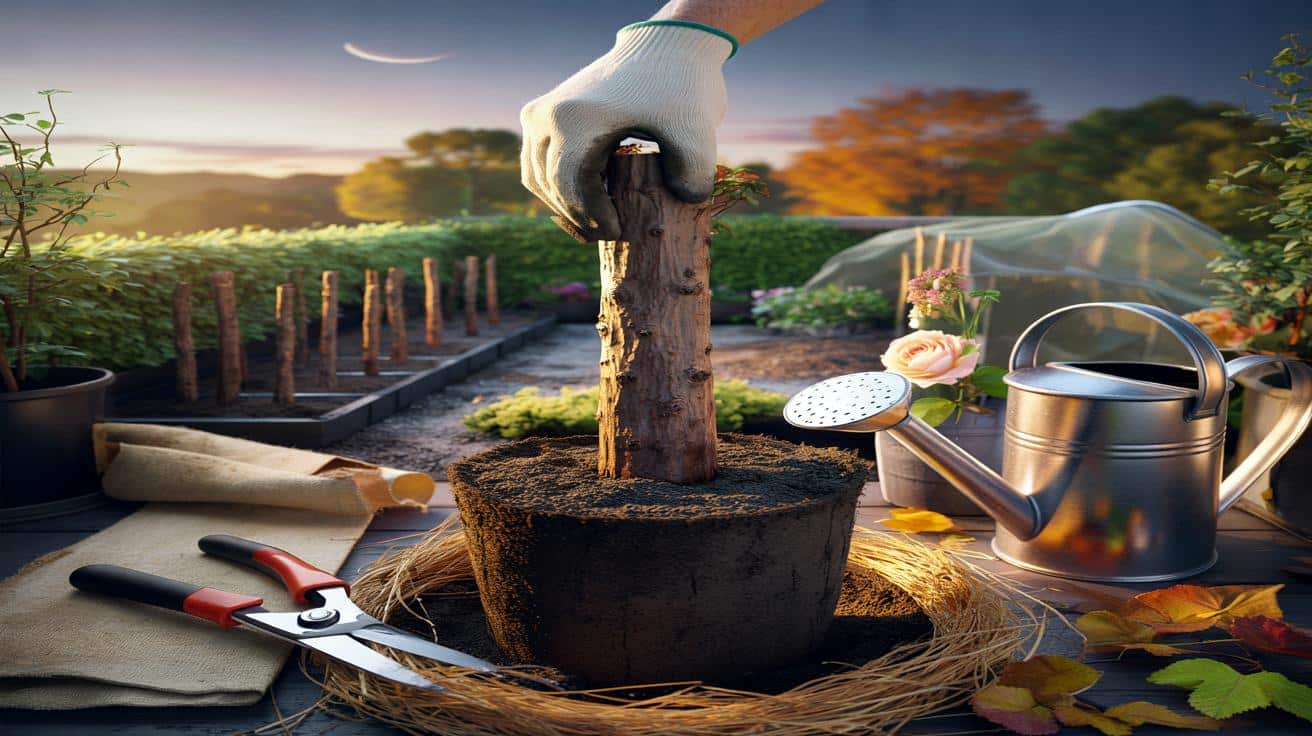A short October routine could tilt the odds in your favour next year.
Gardeners often blame fertiliser, watering and weather for meagre currants. Yet a simple autumn practice, timed well, drives stronger roots and fuller trusses. It needs minutes, not money, and it works in small gardens and on balconies.
Why one autumn habit changes your berry haul
What moon-watchers swear by
Old hands schedule hardwood cuttings when growth slows above the soil and energy sinks to the roots. Many follow the descending moon window between 12 and 26 October, a period they say boosts take‑rate and spring growth. Science stays cautious, but the timing matches what plants do in late season: they prioritise rooting over shoots.
Time your cuttings in mid to late October, when plants channel sugars to their roots. You stack the deck for a vigorous start.
Redcurrants and blackcurrants respond well to this rhythm. You create clones that already “think” like the parent shrub, and you set them up to settle before hard frosts arrive.
How to take redcurrant and blackcurrant cuttings
Tools and setup
Sharp, clean tools and a light, well‑drained medium make the difference. Get these ready:
- Bypass secateurs, cleaned with alcohol
- Gardening gloves
- Free‑draining mix: two parts peat‑free compost, one part sharp sand
- Deep pots or a sheltered strip of open ground
- Watering can with a fine rose
- Mulch: straw, leafmould or shredded bark
Loosen the soil, lift stones and old roots, and rake a level bed. In containers, ensure large drainage holes. Currant cuttings hate sitting in water.
Step by step, no fuss
Work with one‑year wood: firm, straight, pencil‑thick shoots grown this season.
- Cut lengths 20 cm long from healthy shoots. Avoid damaged or diseased wood.
- Make a clean cut just below a bud at the base, and a slanted cut above a bud at the top so you never plant upside down.
- Strip the lower two thirds of buds or leaves to reduce moisture loss.
- Dip the base in rooting hormone if you like, though currants root well without it.
- Insert two thirds of the cutting into moist medium, buds facing up. Firm around the base.
- Space at least 10 cm apart in a nursery row or 3 cuttings per 3‑litre pot.
- Water gently, then mulch to hold moisture and buffer temperature swings.
Use straight, one‑year shoots around 20 cm long. Cut below a bud, plant two thirds deep, and keep the medium just moist.
Keeping winter on your side
Moisture and frost control
Autumn moisture helps roots form; excess invites rot. Aim for balance.
- Improve drainage with grit or sand if your soil compacts or puddles.
- Mulch 5–8 cm thick; leave a small collar bare around each cutting.
- When severe frost threatens, drape fleece or a cloche overnight and vent by day.
- Lift fleece on mild days to prevent condensation and mould.
This simple routine cuts fungal pressure and keeps the rooting zone stable until daylight lengthens.
Nudging roots before spring
Water sparingly through winter if the medium dries. Avoid moving the cuttings; disturbance breaks delicate new roots. From late January, peel back some mulch on bright days to warm the surface, then replace it before night frosts. In February, feed the surrounding soil with a light ring of well‑rotted compost, keeping it off the stems.
Reading the signs of success
What to look for in early spring
By March, buds plump and show green tips. A gentle tug should meet firm resistance, a clue that new roots grip the soil. Keep the surface damp but never soggy. In windy sites, add a short cane and soft tie until growth hardens.
Mistakes that blunt the crop
- Overwatering, which suffocates roots and invites dieback
- Deep shade; currants fruit best with at least half a day of sun
- Feeding high‑nitrogen fertiliser in late winter, which pushes leaves over flowers
- Keeping weak, spindly plants; thin ruthlessly and back the strongest
Skip early high‑nitrogen feeds. You want flower buds, not a thicket of soft leaves.
What you stand to gain
Numbers that matter for your patch
Currants grown from autumn cuttings root fast, carry less stress and tend to settle where they will live. That head start shows in the second summer.
| Type | Typical spacing | Year‑2 yield | Mature yield | Notes |
|---|---|---|---|---|
| Blackcurrant | 1.5 m between bushes | 1–2 kg per bush | 3–5 kg per bush | Fruits on young wood; stool prune to renew shoots |
| Redcurrant | 1.2 m between bushes | 0.8–1.5 kg per bush | 2–4 kg per bush | Fruits on older spurs; ideal for cordons and fans |
| Whitecurrant | 1.2 m between bushes | 0.8–1.5 kg per bush | 2–3 kg per bush | Delicate flavour; great for desserts and jellies |
Figures vary with soil, sun and pruning. In containers, use at least 20‑litre pots, one plant per pot, and expect the lower end of these ranges.
From choice of variety to pruning that pays
Pick cultivars that match your microclimate
- Blackcurrant: Ben Connan and Ben Lomond crop well and resist cold snaps.
- Redcurrant: Rovada and Junifer give long strings and reliable set.
- Whitecurrant: Blanka offers large, translucent berries on tidy plants.
Buy or beg wood from healthy, virus‑free plants. Avoid shrubs with distorted buds or weak growth. Clean secateurs between bushes to limit disease spread.
Pruning for fruit, not fuss
Blackcurrants fruit on young wood. After planting out your rooted cuttings next winter, cut all shoots back to two buds to force a stool of strong canes. Each winter, remove a third of the oldest, darkest stems at the base, and keep a crop of fresh one‑ and two‑year wood.
Red and whitecurrants fruit on older spurs. Train a simple open bush with 8–10 main branches, or try a space‑saving cordon by tying a single stem to a cane and shortening sideshoots to three buds each summer.
Protection, feeding and small risks to manage
Keep birds and bugs at bay
Blackbirds and pigeons relish ripe trusses. Net bushes as fruit colours up, using a taut frame to stop entanglement. Watch for gooseberry sawfly larvae in late spring; hand‑pick early or use a soap spray. On blackcurrants, swollen “big buds” suggest gall mite and reversion; remove affected shoots and avoid propagating from suspect plants.
Feed the soil, then the plant
Currants like moisture‑retentive soil with a pH around 6–6.5. In March, apply 50–75 g per square metre of a balanced organic fertiliser, then mulch with 5–8 cm of compost or manure. Water deeply in dry spells; one weekly soak beats a daily sprinkle. In pots, feed little and often from April to July and keep the rootball evenly moist.
Extra ways to stack the odds
Space, sun and simple maths
Give each bush its full footprint and at least half a day of direct sun. A small terrace can still carry one blackcurrant and two redcurrant cordons. If you root 6 cuttings and plant the best 3 next winter, hitting the year‑2 yields above puts 4–7 kg of fruit within reach—enough for breakfasts, baking and a row of jars.
Pair cuttings with good pollinator support. A pot of flowering thyme or borage by the row lifts bee visits, which lifts set on red and whitecurrants. Keep a diary of dates, weather and yields. Next October, repeat the 15‑minute session. You refresh your stock, swap plants with neighbours and spread the risk against a bad year.








